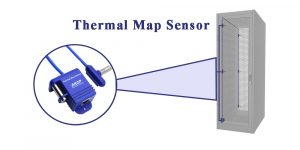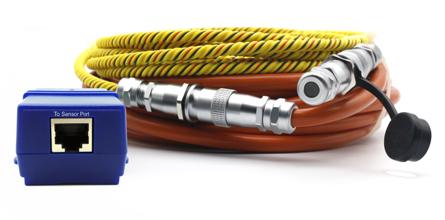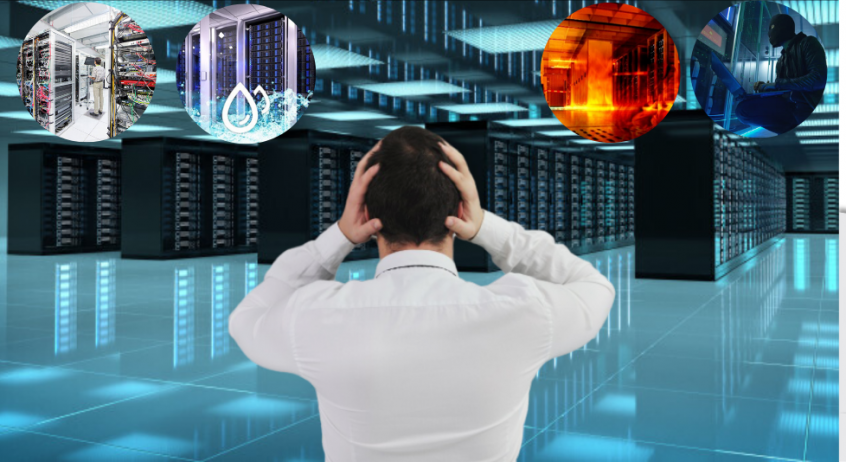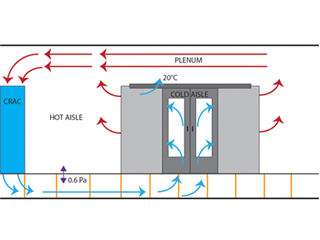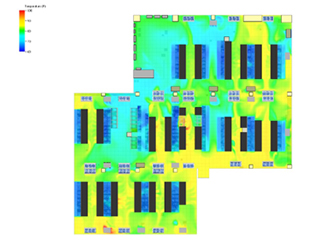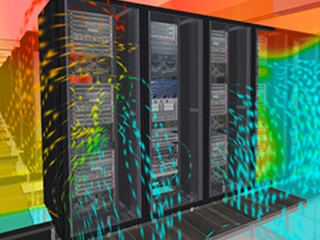Datacenter environmental monitoring system is an essential component of a data center. Even if the technical infrastructure is cutting-edge, if factors like heat or moisture are ignored, the expensive infrastructure may fail, resulting in extra costs and downtime. Managers of datacenters must have an all-of-the-above approach that considers environmental balance as well as data transmission efficiency. Neglecting the data center environment is a recipe for disaster.
Data Center Environmental Monitoring Areas Of Control
The typical processes involved in data center monitoring are trained technicians checking the state of equipment, network traffic, application availability, and a variety of other aspects. New technologies are assisting in the identification and resolution of abnormalities as they occur. The many parts of the data center environment all require the same strategy.
Environmental sensing controls for the data center are advertised by a variety of companies, but the primary areas that require environmental management are:
When a data center’s heat cannot be dissipated rapidly enough, the danger of damaged hardware and data loss increases. To be efficient, data center cooling needs careful planning as many things can go wrong if the temperature is not properly controlled. In addition to not having enough cooling, you will squander electricity if the data center is too cold.
Even a small change in temperature can have a substantial impact on running expenses. Temperature monitoring helps you to assess your cooling system’s efficiency. Sensors should be placed at critical locations to monitor the temperature. The top, middle, and bottom of racks, as well as the intake and discharge vents, should all be kept an eye on. Placing sensors at the front and rear of the racks and inlet and outlet of the CRAC and air handling units allows for the analysis of ∆T (temperature difference) between 4 key points.
- Humidity

Photo Credit: dc.mynetworkinsights.com
In a data center, too much or too little humidity can be dangerous to the equipment. Failure to manage humidity levels might result in unanticipated downtime. If the humidity level is too low, the equipment might develop an electrostatic charge, which can lead to deadly static electricity. Corrosion and electrical shorts might result from this condensation.
A data center’s average cost per minute of the outage is over $9,000. Monitoring humidity in data centers will aid in the appropriate operation of your equipment. New recommendations recommend a minimum humidity of 20% and a maximum humidity of 80%. The optimal % range is 45% to 55%.
Although cooling the entire room is inefficient, airflow systems require regular maintenance. Dust and debris can obstruct vital airflow, resulting in hardware failure. Airflow systems should be monitored to ensure that any problems are discovered as soon as possible.
In any electronic setting, uncontrolled water and other liquids are a no-no because they can cause electrical short circuits and fire danger. Liquid-based cooling systems, chilled doors, and even computers submerged in cooling liquids are currently being used in certain data centers. Spot sensors or lengths of water leakage detecting rope are used to detect water leaks.
Monitoring incoming current and preparing for a possible equipment shutdown are important parts of avoiding hazards. Even if an uninterruptible power source (UPS) is used, electrical outages can cause the air conditioning to go down. Without temperature regulation, the entire room might quickly overheat.
Another effective technique to monitor power supply and quality is to use voltage sensors. By monitoring line voltage, they may determine whether a brownout is occurring. Knowing how much electricity a piece of equipment consumes is crucial to increasing efficiency.
A server room or data center security system will typically consist of access-controlled door entry. Access control does not have to stop with door entry and exit. Swing handles with built-in RFID readers can be used on server racks. Camera security can also be deployed alongside cabinet and room-door entry control.
Environmental Effects
Data centers make up a different eco-system of their own, a network equipment and services supplier. He adds that monitoring is most vital 1) in the rack, 2) under the floor, and 3) in the room.
Datacenter equipment, like people, thrives in a controlled atmosphere that is neither too hot nor too cold. Heat is hardware’s worst enemy as the increase in temperatures can shorten the lifespan of data center equipment over time.
The temperature isn’t the only issue that has to be considered. Electronic components are extremely vulnerable to uncontrolled dampness. Dry air can produce static electricity, which can destroy sensitive gadgets like hard drives. Moisture in the air can condense and cause electronic devices to short circuit. This is why data center technicians should always wear an anti-static wrist band while handling equipment. Water that accumulates on the floor or other surfaces attracts rats and other pests, as well as creates a safety risk. Security, electrical, and environmental devices all require constant monitoring.
Follow the Guidelines

Photo Credit: searchdatacenter.techtarget.com
Datacenter standards are provided by a variety of organizations. One of them is the American Society of Heating, Refrigerating, and Air-Conditioning Engineers (ASHRAE). According to its website, the Society and its members focus on building systems, energy efficiency, indoor air quality, refrigeration, and sustainability within the sector. A search for a data center on the site turns up a deluge of articles and papers on the subject, with an emphasis on the environment.
Other ASHRAE papers cover a broad variety of specifications. Consider the following as an example:
ASHRAE Standard 62.1-2016 recommends that relative humidity in occupied spaces be kept below 65% to avoid conditions that might lead to microbial growth.
The ASHRAE TC9.9 whitepaper is another example. It offers information on thermal guidelines for data centers, as well as contact temperature constraints for power equipment and the use of an uninterruptible power supply.
We will not attempt to specify the most recent standard in this little blog article. You’ll need to reference the ASHRAE standards to get answers to particular questions.
Development of Data Center Environmental Monitoring System
Upsite Technologies explores environmental monitoring systems in “The Role of Environmental Monitoring in Data Centers.” It’s stated that it’s primitive in the beginning, relying on walk-throughs or signals provided by overheated computers. This component of data center administration, like everything else in the realm of information technology, has gone a long way.
In the past, the environmental monitoring system had fewer data points and less technology. Everyone knows that CPUs require cooling fans to maintain a safe operating temperature, and this was a major consideration at the time. It’s now feasible to install sensors throughout the data center that can wirelessly report on a variety of elements to a full environmental management system. Temperatures are higher towards the back and top of a rack and lower at the bottom and front, according to researchers. They can create hot and cold aisles to control the flow of air between the racks. Environmental parameters may be monitored without having to travel via the production network using embedded systems.
AKCP Data Center Environmental Monitoring Solution
Monitoring the environmental conditions in your computer room and data center is essential. Ensuring you are running at optimal ASHRAE recommended temperatures will mean less downtime and longer life of your servers and rack-mounted equipment. AKCP has a range of sensors to help you do this, from basic temperature and humidity sensors to cabinet thermal maps for detailed monitoring.
With over 30 years of experience in Data Center monitoring, AKCP is the world’s leader in SNMP-based Data Center Environmental Monitoring systems. AKCP has a variety of wired and wireless to choose from depending on your need.
The AKCP Environmental monitoring system wired sensors could be expanded up to 300 feet and applicable to any sensorProbe. Wireless sensors are powered by a battery that could last up to 10 years.
Thermal Map Sensor
Obstructions Within The Cabinet

AKCP THERMAL MAPS
Cabling or other obstructions can impede the flow of air causing high-temperature differentials between the inlet and outlet temperatures. The cabinet analysis sensor with pressure differential can also help analyze airflow issues.
Server And Cooling Fan Failures
As fans age, or fail, the airflow over the IT equipment will lessen. This leads to higher temperature differentials between the front and rear.
Insufficient Pressure Differential To Pull Air Through The Cabinet
When there is an insufficient pressure differential between the front and rear of the cabinet, airflow will be less. The less cold air flowing through the cabinet, the higher the temperature differential front to rear will become.
Power Usage Effectiveness (PUE)
When the data is combined with the power consumption from the in-line power meter you can safely make adjustments in the data center cooling systems, without compromising your equipment, while instantly seeing the changes in your PUE numbers.

Locate Rope Water Sensor
Water Leak
Ideal for detecting water leaks in hard-to-see areas, such as under raised floors and false ceilings. The Locate Rope Water sensor will give you a precise location of the water leak so you can respond promptly to protect your enterprise resources from water damage.
Conclusion
Relatively granular environmental monitoring is critical to effectively optimizing the entire data center. Add in the capabilities of AI and analytics, as well as other new technologies, and it’s easy to see how data centers around the world could be adequately monitored through a single pane of glass. Environmental monitoring is undeniably vital, and the practice is improving
Reference Links:
https://totaluptime.com/environmental-monitoring/
https://www.peertechzpublications.com/articles/
https://www.monnit.com/applications/data-center-server-room-monitoring/
https://study.com/academy/lesson/data-center-security-standards-best-practices-requirements.html
https://www.vxchnge.com/hubfs/data%20center%20operations%20center.jpeg


